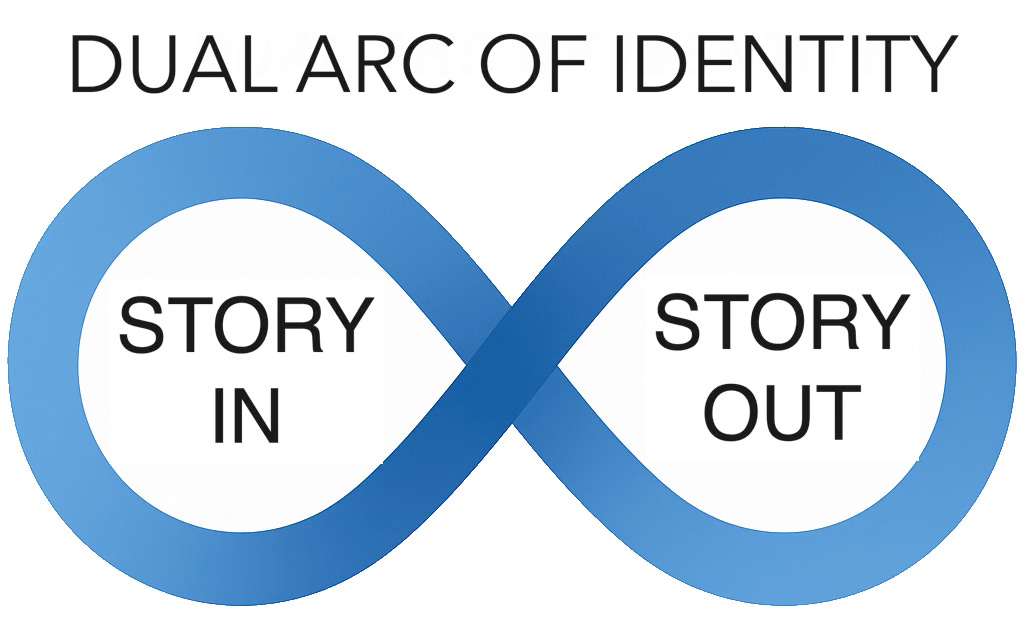Getting Back Our Game
When self-directed play disappears, so does the freedom children need to explore, adapt, and define themselves. Reclaiming that space is essential to rebuilding their agency, imagination, and confiden
In sports, business, and even recovery from personal setbacks, elite performers often return to fundamentals to regain their edge. They drill the basics—repetition, posture, timing. What if we applied that same logic to America’s social and cognitive fragmentation?
Since the mid-1960s, when Moore’s Law was first articulated—and especially from the early 1970s onward in response to the accelerating cascade of change—eight major trends have moved in lockstep. Some have surged, others eroded, but together they’ve reshaped how individuals, families, and societies make meaning:
Moore’s Law accelerated: computing power doubled every 18 months.
System complexity exploded: overwhelming human-scale decision-making.
Emotional language surged: intuition replaced logic; identity overtook evidence.
Social anxiety climbed: chronic and unresolved, it became the cultural backdrop.
Evidence-based reasoning declined: the space for shared discourse hollowed out.
Narrative coherence fractured: the shared map dissolved into tribal fragments.
STEM performance deteriorated: math and science scores declined, exposing our diminished capacity for structured reasoning.
Language was weaponized: political messaging evolved into a tool for emotional manipulation, exploiting cognitive fragmentation for strategic gain.
The political weaponization of language took form in the late 1960s, as figures like Kevin Phillips and Richard Nixon began using rhetoric aimed at grievance, fear, and division. By the 1990s, political strategists such as Frank Luntz and Newt Gingrich had transformed language into a precision instrument of emotional manipulation—intentionally fueling polarization by targeting populations with weak narrative coherence. It was no longer just campaigning. It was a strategic disruption of how people think, feel, and make meaning together.
These patterns exhibit a cascading relationship, each development both cause and consequence of the others. This dynamic, once set in motion, proved self-reinforcing—leading not just to political polarization, but to a deeper erosion of narrative and cognitive integrity. What began as a surge in computational power soon overwhelmed society’s meaning-making capacity. The result is not merely institutional dysfunction, but a widespread collapse in coherence.
And coherence isn’t abstract. It lives in the human mind as something called narrative identity: the internalized story we tell about who we are, how we came to be, and where we’re going. It allows us to integrate past events, align values with action, and construct a self that can adapt over time.
When narrative identity erodes, so does personal agency. People become reactive instead of reflective. Vulnerable to manipulation. Detached from history. Parents and educators see the effects daily—shorter attention spans, shallow self-concepts, heightened fragility.
So what are the fundamentals? Where can we begin?
One answer is what we call the Dual Arc of Identity: a two-part structure that reinforces coherence through deliberate, developmentally timed practices.
The first arc is story flowing into the child—books read aloud, values modeled, language seeded. This is how internal structure is formed: through story as scaffolding.
The second arc is story flowing out—daily narration of experience, guided reflection, the child learning to shape events into meaning. This is how identity is authored: through story as integration.
We already know how to do this. From birth to around age eight, we read aloud to our children—seeding language, empathy, and internal structure. But what if we treated the years from eight to twelve with equal intentionality? At that age, children are capable of concrete reasoning but haven’t yet developed the abstract thinking that adolescence will bring. It's a critical window—still pliable, but increasingly self-aware. A simple daily ritual of structured reflection—asking not just what happened, but how it felt, what it meant, and what might come next—can help them practice coherence while it’s still within reach. This isn’t just about reflection for its own sake. It’s about parents deliberately helping children construct narrative identity—scaffolding the mental and emotional architecture they’ll need to withstand the storms of distraction, disinformation, and identity distortion that lie ahead.
In childhood, especially from ages 7 to 12, this narrative loop is critical. But in today’s attention economy, we’ve outsourced both arcs. Screens tell stories at children, but few ask them to narrate their own. That creates a deep asymmetry—content consumption without meaning construction.
Reclaiming coherence, then, is not just about facts or media literacy. It starts with restoring the cognitive rituals that help children become narrators of their own lives.
This isn’t soft. It’s strategic. A generation raised to narrate its experience is a generation less vulnerable to manipulation and more prepared to lead.
So if America wants to get back in the game, let’s return to the fundamentals of meaning-making. Before we can rebuild shared discourse, we need to ensure that each child can construct a story they believe in—and build from.
Because before children can lead, they must first learn to author themselves.
Further Reading



